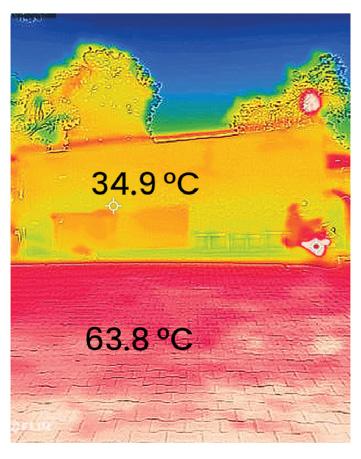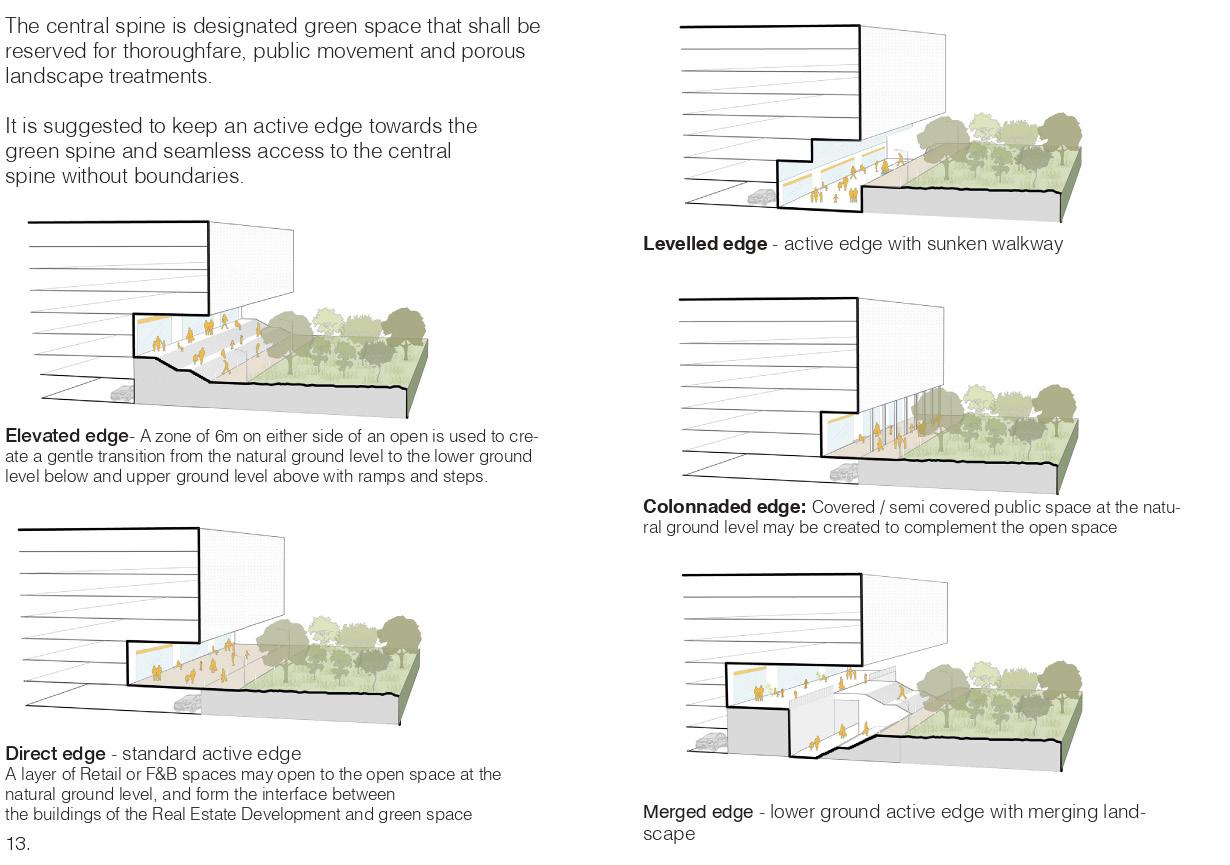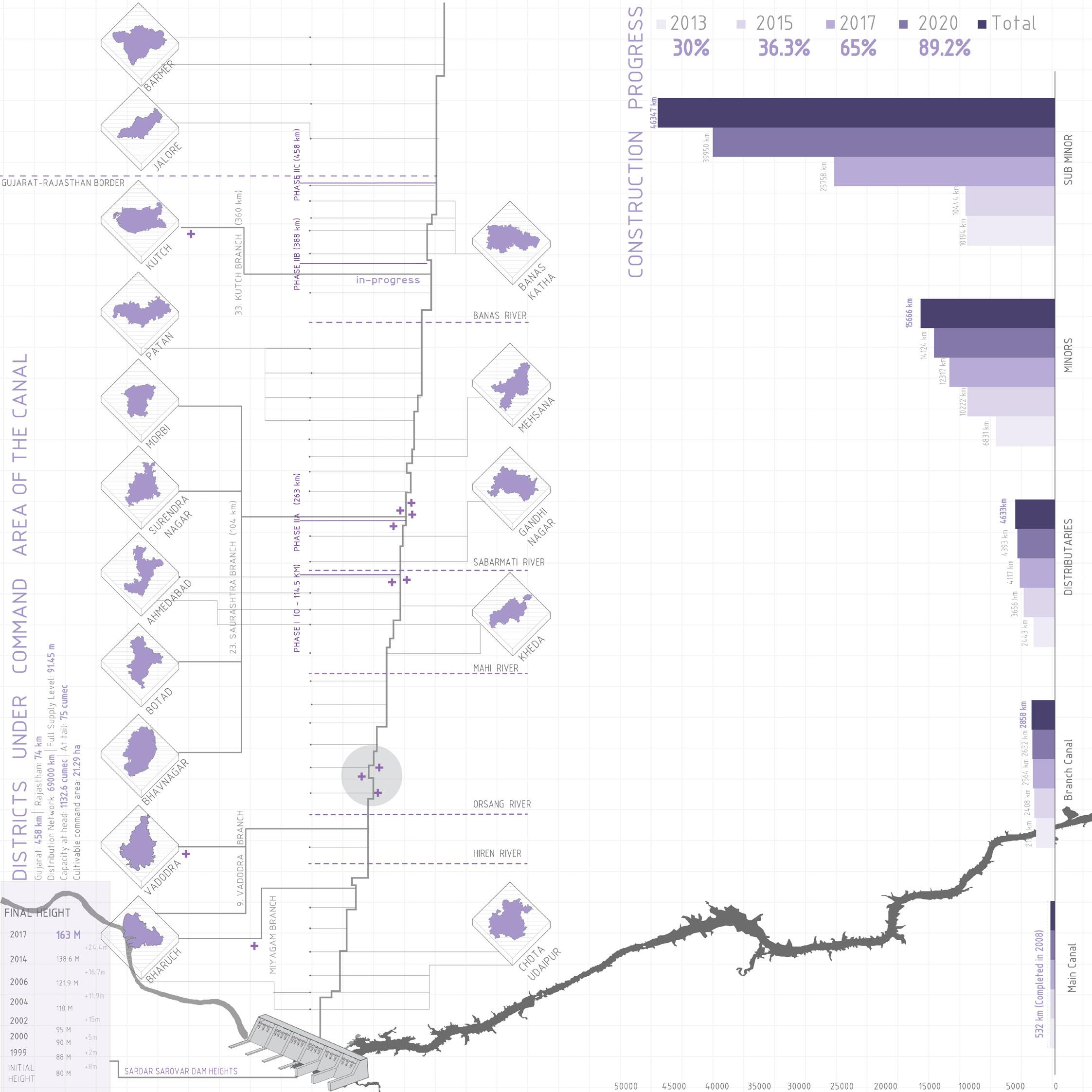
PORTFOLIO
Bachelor’s in Urban Design CEPT University
Anoushka Mukherjee

ABOUT
Indian
6 August 2001
New Delhi
CONTACT
+91 8510005747
anoushka.ug190120@cept.ac.in/ anoushka.mukherjee2001@gmail.com
ADDRESS
A-703, Prabha Apartment, Sector-23, Plot-11, Dwarka, New Delhi-110075
EDUCATION
Currently Pursuing
Exchange Semester: Politecnico di Milano, Milan, Italy
Master of Science in Urban Planning and Policy Design February 2024 - July 2024
CEPT University, Ahmedabad Bachelors of Urban Design (2019-2024)
Venkateshwar International School, Sector-10, Dwarka, New Delhi (Till 2019)
LANGUAGES
English
Hindi
Bengali
MANUAL SKILLSET
Drafting
Model Making
Laser Cutting
ANOUSHKA MUKHERJEE
(CEPT Portfolio:https://portfolio.cept.ac.in/student/anoushka-mukherjee-ug190120 (LinkedIn:https://www.linkedin.com/in/anoushka-mukherjee-217334188/
Embarking on the journey as an urban designer, I am driven about applying into dynamic and people-centric environments. I approach each project with innovation. I aim to re-imagine public spaces with the lens of resilience. My bring about change at the core to ultimately empower through designs. With determined to critically study cities and urban landscapes to foster sustainable large, I recognize the urgency of crafting designs that will pave the way for
Sketching
Researching and Writing
DIGITAL SKILLSET
Autodesk Autocad
Adobe Photoshop
Adobe Illustrator
Adobe InDesign
Rhinoceros 3D
SketchUp
ArcGis
Microsoft Office
AREA OF INTEREST
Data Analysis
Climate Responsive Strategies
Public Space Designs and Planning
Policy and Research
Visual Communication
Illustrations
ACHIEVEMENTS
Blog Writing:
Policy Reforms Aiding Green Affordable Housing Adoption in India
IIFL Home Loan, 2022
https://www.iiflhomeloans.com/blogs/policy-reforms-aiding-greenaffordable-housing-adoption-india)
Cept Excellence Awards
Vulnerability in a Pandemic City (Monsoon 2021)
Winner 2022
Unmute Publication: State of Water
Compartment S4
Selected 2021
:https://www.linkedin.com/in/anoushka-mukherjee-217334188/
applying my knowledge and skills in shaping urban spaces with creativity, analytical thinking and a passion for My interest lies in working with data and policies to With a keen interest in economics and sociology, I am sustainable development. With climate change looming cities of tomorrow.
International Exchange Mobility Program
Politecnico di Milano, Milan, Italy
Msc in Urban Planning and Policy Design
Selected
February - July 2024
WORK EXPERIENCE
URBAN DESIGN TRAINEE
Building Design Patnership (BDP)
New Delhi
June 2023 - July 2023 ( 1.5 months)
June 2022- November 2022 (6 months)
INTERNSHIP TRAINEE
SpaceMatters
New Delhi
July 2021- August 2021 (2 months)
GRAPHIC TEAM
Prameya Event
Faculty of Planning
2020
VOLUNTEER
UN Youth Volunteer
2020
WORKSHOPS
IIHS Urban Arc 2024
Unpacking Urban Marginalities
Indian Institute of Human Settlement
January 2024 (Attendee)
URBAN DESIGN IN INDIA
Ahmedabad
CEPT Conference
May 2023 (Attendee)
FOUNDATIONS: DATA DATA EVERYWHERE
Google Coursera
2021
FOLLOW THE CRAFTSMEN! A HANDS-ON APPROACH IN INDIGENOUS CONSTRUCTION MANAGEMENT SYSTEMS
Naggar, Himachal Pradesh CEPT Summer School
May 2023
NID NODE
National Institute of Design, Ahmedabad Online Course
2019
Relative Study Programme Exploring Varanasi
2019
ADDITIONAL INFORMATION
STUDENT VOLUNTEER
CEPT Summer Exhibition
Ahmedabad
May 2022, December 2023
STUDENT ASSISTANT CEPT Communication Office
Ahmedabad
November 2023
CORE TEAM MEMBER
Urban Powwow (Academic Club)
2021
MEMBER Natakbaazi (Theatre Club)
2020

 Ghar Ghar ka Paani studies the consumption patterns in my apartment bifurcating the households with the water usage activities and the number of buckets utilized.
Designing Water for Civic Expresson (Semester 4)
Ghar Ghar ka Paani studies the consumption patterns in my apartment bifurcating the households with the water usage activities and the number of buckets utilized.
Designing Water for Civic Expresson (Semester 4)
CONTENTS
All the below projects are individual work unless and otherwise stated
I. SEMESTER 9
Studio: Resilience Thrift: Strategies for adapting to climatic change in housing for the urban poor
PLAYBLOCKS: RELIEF PLAY SPACES FOR CHILDREN OF VANJARAVAS Design Project
II. SEMESTER 8
Studio: Urban Assemblies: Active Vacancies
CRADLE: SHELTERING THE UNHEARD Design Project
III. SEMESTER 7
Internship: Building Design Patnership Ltd., New Delhi
NOIDA INTERNATIONAL AIRPORT Airport Development and Real Estate Guidelines
IV. SEMESTER 6
Studio: From Utopias to Heterotopias
SITE DOCUMENTATION
Vasantnagar, Gota (Group Project)
CO-LIVE: MIGRANT HOUSING Design Project
V. SEMESTER 5
Studio: Vulnerability in a Pandemic City ANGAN: SUPPORT CENTRE FOR WOMEN Design Project
VI. SEMESTER 4 _
Studio: Designing Water Infrastructure for Civic Expression UN(GROUPED) CANAL
City Scale Mapping
THE SYNERGETIC CANAL
Speculative Design
VII. SEMESTER 3
Studio: Unit Light Infrastructures ASHA LARI (PROJECT UNBLOCK)
Mobile Infrastructure Design for Displaced Communities (Group Project)
VIII. FOLLOW THE CRAFTSMEN!
A Hands-On Approach In Indigenous Construction Management Systems
CEPT Summer School (Group Project)
I.PlayBlocks
Relief Play Spaces for Children of Vanjaravas
Semester 9
Studio: Resilience Thrift
Melissa Smith | Vishal Chudgar | Abidhussain Hira
Ahmedabad
July- Novemeber 2023
VISIT:https://drive.google.com/drive/folders/1Dg9df-wzWrdTUditFGp5SL2EOSztdW1i
PlayBlocks aims to create climatically comfortable play spaces for children in the slum settlement of Vanjaravas, Ahmedabad and establish connections between open areas to act as catalysts for their daily engagements. These spaces are intended to provide relief along with inspiring, engaging and accessible environments that foster healthy development.
The project identifies four different scales of open spaces (large and small open spaces, lanes and in-between pockets) and brings forward design with two primary strategies; one, by surface treatment with vegetation and another, with more replicable and cost-effective solutions using bamboo as play element. The idea is to provide not just one type of space, but a variety of open spaces with different scales and characteristics to have relief areas that become playfully engaging for children. Thus, the play spaces are imagined to be resilient and provide support to the kids of Vanjaravas by transforming open spaces into more participating and comfortable spaces.







NEED OF PLAY SPACES (Understanding vulnerabilities of Vanjaravas children)
BUILT ENVIRONMENT
•Low quality and deficient infrastructure
•Not accessible services (physical barriers)
•Infrastructure not designed inclusive of children
•Lack of clean open spaces and street furnitures
•Lack of openness of streets (restricted connectivity).
ENVIRONMENTAL CONSTRAINTS
•High heat stress
•Prone to diseases and weaknesses
•Poor ventilation and cramped living spaces
•Ambient air pollution
•Unsafe ground conditions (water logging and uneven ground)
PROTECTION CONSTRAINTS
•Lack of legal recognition
•Unsafe shelter and infrastructure
•Unsafe roads
•Lack of safety in open spaces
•Lack of regular health check-ups and vaccine provisions.
 Heat Map
Site Model (Scale 1:250)
Drainage and Flooding Map
Heat Map
Site Model (Scale 1:250)
Drainage and Flooding Map

Climate analysis of site intervention spaces
Run (Physical Play)

Obstacle Run
Climb (Interactivel Play)

Explore (Imaginative Play)

Make (Sensory Play)

Rest (Solitary Play)







Site 1: Lake Edge
Area: 722 sqm

Site 2: Green space
Area: 310 sqm

Site impact scale
Proposed anganwadi

Planted Trees
Existing anganwadi

Vehicular connections
Pedestrian connections






Site 3: Small space
Area: 100 sqm


Site 4: Narrow Lane Area: 6 m
55-65 °C
45-55 °C
35-45 °C
25-35 °C
Site 5: In-between pocket
Area: 88 sqm





Infants (0-2 years)
Toddlers (2-4 years)
Age Groups
Young Children (4-12 years)
Teenagers (12-17 years)
DESIGN STRATEGIES
STRATEGY 1: SURFACE TREATMENT (Sites 1 and 2)

Section AA’
mound
sensory zone jaali sandpit seats

PROPOSED PLAN (Site 1)
Long-term strategy with the idea of permanence (Site areas: 300-1000 sqm)
STRATEGY 2: BAMBOO PLAYSPACE (Sites 3,4 and 5)

Section CC’
bamboo poles seats

PROPOSED PLAN (Site 4)
Short-term strategy with the idea of replicability (Site areas: 50-300sqm)
Anganwadi and playspace shaded with full grown trees
1 month
Building completed and functioning with play elements
Land clearance
1. Classroom space
2. Office and storage
3. Distribution space
4. Kitchen space
5. Sandpit
6. Sensory zone
7. Mounds
8. Planted Tree
9. Terracotta jaali wall seating
10. Water point
11. Plantation on lake edge
4 months
Ground levelling and foundation for bamboo placed (on-ground)
8-10 years
Bamboo poles placed and tied
1-2 weeks
2 weeks
Play elements placed with mesh nets for shade
1 week
1. Bamboo poles
2. Mesh nets for shade
3. Proposed trees
4. Water point
5. Hammocks
6. Climber slide
7. Seatings
II.Cradle
Sheltering the Unheard
Semester 8
Studio: Urban Assemblies: Active Vacancies
Melissa Smith | Caitanya Patel
Ahmedabad
January-May 2023
VISIT:https://drive.google.com/drive/u/1/folders/1TCgCeN3x7PWZFEfHcuEfYNQXvFi3dQEW
THE UNSILENCING OF VACANCY
Vacancy can be defined as the potential to provide support and care for vulnerable populations in urban areas. Cities are home to communities that experience homelessness, eviction, stigma, discrimination, and migration. The question then arises: how can the city’s vacant lands become a refuge for these communities to reintegrate into the city in a humane and dignified way?
By understanding movement patterns and existing socioeconomic conditions, a support system can be established to provide shelter for these communities and allow them to build themselves up within the city. These communities can also become agents for the vacant lands, creating a sense of belonging and providing opportunities for engagement with the land.
The vision is to identify public lands in urban centers that can become part of the core economic area and utilize the benefits of communal living. The shelter provided here serves as a support system for the city and enables vulnerable communities to have better representation.
CITY SCALE
Understanding vacancy with slums



PLANNING AND ORGANISATION
Process of setting up the shelter


III.Internship Work
Semester 7
VISIT:https://www.bdp.com/en/locations/india/
As an urban design trainee at BDP in New Delhi, I contributed to the urbanism team, engaging in diverse projects ranging from architecture to master planning scale across India and the MENA region. My responsibilities encompassed design conceptualization, illustration, drafting, organization, and rendering tasks.
Projects: Dhaka Metro TOD Project ( Uttara and Gabtoli Stations) | Competition submission for New Sohar Smart City | Baddi Barotiwala Nalagarh (Bbn) Industrial Corridor Masterplan
PROJECT: Noida International Airport Airport Development and Real Estate Guidelines
Location: Jewar, Uttar Pradesh, India
Client: Yamuna International Airport Private Limited (YIAPL)
Area: 3300 acres
Cost: 5730 crores (Phase 1)
Completion: 2022

Noida International Airport City will be a destination for all with a vibrant public realm connecting the city side into a cohesive development.This gateway city will be a combination of mixed uses to create a 24x7 safe atmosphere for passengers and visitors alike. City side will not only be a logistics gateway but will also become a future benchmark for airport neighbourhoods.
The Airport Development Guidelines and Real Estate Concept Masterplan were composed in a booklet and published to aid in further design execution. Both these books included the norms and ideations to incorporate different typology of streets, landscape, amenities , etc.

MY ROLE:
I was part of the closure stage of this project and worked on the final deliverables.
-Involved in making Illustrations for Multi-utility zones and Edge Conditions
-Worked on typologies for street sections
-Rendered the East Precinct Masterplan
-Updated the 3D Digital Model for the Masterplan
-Helped in Composing the Airport Masterplan and Real Estate Guideline Booklet

Use of Multi-Utility Zones
Provision of MUZs ensure that adequate clear walking space is available while accommodating ancillary activities within the footpath area. MUZs are best suited for neighbourhood streets with mixed land-use, where multiple activities are present


IV.Co-Live: Migrant Housing
Semester 6
Studio: Utopias to Heterotopia
Imran Mansuri
Ahmedabad
January-May 2022
VISIT: https://drive.google.com/drive/u/1/folders/1-V080ainrr7pdg8PK6AHDoISSpL6KQEG?usp=sharing
SITE DOCUMENTATION
Group Work
The project is situated in Vasantnagar, Gota, and aims at redefining the already existing Mahatma Gandhi Vasahat.
The rural housing resides diverse demography with the community engaging in various live-work activities.
Mahatma Gandhi Awaas Yojana Housing is a rural housing complex located along Gota Road in the neighborhood of Vasant Nagar in Ognaj Village.
The housing was built in the year 1985 along the fringes of the city and allotted by the AMC housing board to the owners. The housing was built to accommodate people from slums like Wadaj and other places.
The site plot is approximately 1.02 Lakh square meters and is owned by Gujarat Housing Board. It is a non-gated community with people from different religions and castes living.





 Poor construction, omission of beams leads to structural instability and becomes an hazard to life.
Different type of house extensions like otlas, toilets, foyers, etc are a prominent characteristic at the site.
The empty open ground space has been transformed into market space over the last decade.
Poor construction, omission of beams leads to structural instability and becomes an hazard to life.
Different type of house extensions like otlas, toilets, foyers, etc are a prominent characteristic at the site.
The empty open ground space has been transformed into market space over the last decade.

The whole plot can be divided into two very distinct types of housing clusters; The courtyard typology is G+2 storey high buildings, it consists of two different types of units of respective areas 13 sqm and 18sqm. and the linear typology has one unit type, 1 room, kitchen which is 27 sqm.







PROPOSED SITE PLAN
1. AMC Pumping Station
2. Gokul Ashram
3. Sarkari School
4. Sheth Amulakh Vidhyalay
5. Jain Derasar
6. Municipality Office
7. Court House

8. Underground ONGC Pipeline

Co-Live Migrant Housing is a mass housing design aiming to create community spaces for the residents of Gota. The idea is to provide different scales of open and semi-open spaces on all floors.
MODEL



V. Angan: Support Centre for Women
Semester 5
Studio: Vulnerability in pandemic city
Vrushti Mawani | Mariana Paisana
Ahmedabad
September-December 2021
VISIT:https://drive.google.com/drive/folders/1UTHPjUMdeUDcaYDuHakrnAkTf_JjGI6S?usp=sharing
CEPT Excellence Award Winner (Studio)
Angan, a play of public and private spaces is a Learning Centre for women and children pavement dwellers to learn, develop and grow through skill training, education programs, and community engagement.
Situated on the southern side of the Pakwan Junction, it aims at transforming into a safe space for pavement dwellers particularly women and children.







VI. DWICE: Designing Water Infrastructure for Civic Expression
Semester 4
Studio: DWICE
Dhara Mittal | Nishant Mittal Ahmedabad
January-May 2021
VISIT:https://portfolio.cept.ac.in/fp/designing-water-infrastructure-for-civic-expression-ur2008-spring-2021/the-synergetic-canal-spring-2021-ug190120
Un (Grouped) Canal City Scale Mapping
Water is guided by a set of machines before reaching the city of Ahmedabad, Un(Grouped) Canal deconstructs this mechanized route by ungrouping the journey of various structures located on the Narmada main canal. The idea is to form a taxonomy of apparatus constructed to make the water move in the city.
The journey of water supply for the city begins from inspecting and ungrouping its surrounding watersheds, formed by Sabarmati, Mahi, and Narmada rivers. On each of these watersheds, dams are constructed to direct the water for supply. The newest Sardar Sarovar Dam constructed on the Narmada river in 2017 is the primary source of supply for the city. The dam is the largest amongst the three with a catchment area of 88,00 sq kilometers.
The journey of the canal spans about 240 km till Ahmedabad and begins from the dam through a canal gate passing through the head regulator which controls the amount of water entering, Along the path the water passes through cross regulators, escape structures, road bridges, aqueducts, canal, and drainage siphons, siphon aqueducts and canal crossings to reach its destination.
Along this complex route, These multiple structures constructed regulate and control the water, thus transforming the journey of the natural source to a mechanized movement.










The Synergetic Canal is a response to shifting narratives for water use, failure in infrastructure execution, and nonprevalent last mile connectivity of the Narmada Canal that has robbed thousands of farmers of the promise of water for irrigation. Situated in the Vadodara district, it re-imagines the canal network and its associated infrastructural systems as mechanisms that function to benefit the agrarian sector and farmers.
The speculation works with existing infrastructure systems and reimagines them as machines that contribute to the cycles of growing and harvesting that are not only productive but also regenerative. Added to the existing are community-developed mechanisms that are deployed to create decentralized and distributed agents of care and growth. The speculation is more a question ‘What if the canal system started working to create a sustainable holistic network for its initial purpose of agriculture?’
Network of Narmada Main Canal along with the construction progress through the years



 Transformed structures for intervention on the Narmada Canal working for the benefits of farmers and their lands following farming cycle
Isometric View of the transformed canal
Land Preparation view
Transformed structures for intervention on the Narmada Canal working for the benefits of farmers and their lands following farming cycle
Isometric View of the transformed canal
Land Preparation view
VII. Asha Lari: Mobile Infrastructure Design
Semester 3
Group Work
VISIT:https://drive.google.com/drive/folders/1oy5PJdTkhusU82wpVuwGfpZ_t-3wvwXK
Studio: Light Infrastructure
Kruti Shah
Ahmedabad
July-November 2020
‘Asha Lari’ visualises to aid the communities through dynamic creation of safe and uplifting spaces that generate community engagement for the people of Ganeshnagar who were displaced due to the Sabarmati Riverfront Project. It uses the element of khatlas with complementary elements of radio, projector, blackboard, planks used as tables, microphones, books, and newspapers which involves the entire community and unites them.
The aim of the Asha lari is to provide a voice for the people who can unite in the spaces created by lari and engage with solutions and actions for the injustice faced by them. The reading section engages the community to be well aware of the happenings around and act as a library for children to learn. The use of the khatlas, opens up the spaces for education, awareness programs, community meetings, celebrations and festivals, leisure activities, women empowerment, engagement and a library



Drawing (Mainframe) Scale: 1:20


 Working
Working


Lari Katha is an illustrated narrative representing the series of events that occur during a relocation, and the aid Sahyog Lari and Transit Kit provide to the communities.
The premise of the story begins hypothetically from the Sabarmati River Development Project gradually progressing as an implementation guide for the displaced families.
VISIT: https://issuu.com/anoushka_mukherjee/docs/individual_pages




Construction Pamphlet aids in understanding the step by step construction of both Asha and Construction Lari. It is provided at the end of the Lari Katha.
The pamphlet aims to materialize the planning, coordinate of agencies and estimate the materials. This is a guide to the construction process.
VISIT: https://issuu.com/anoushka_mukherjee/docs/individual_pages/24

 ASHA LARI
ASHA LARI
The pamphlet takes readers on a visual journey, tracing a student’s exploration and education in indigenous design the intricate processes involved in material procurement, construction, and logistics, all of which are unveiled through



management systems
design principles of the Himachal region, specifically focusing on Kathkuni and Dhajji architecture. It also delves into through conversations with skilled craftsmen.

Email: anoushka.ug190120@cept.ac.in/ anoushka.mukherjee2001@gmail.com
Contact: +91 8510005747
Anoushka Mukherjee